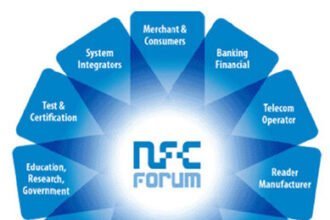As I wrote in last week’s blog post, a data warehouse appliance simplifies platform and system resource administration. It doesn’t simplify the traditional time-intensive efforts of managing and integrating disparate data and addressing performance and tuning of various applications that contend for the same resources.
Many data warehouse appliance vendors offer sophisticated parallel processing environments, query optimization, and specialized storage structures to improve query processing (e.g., columnar-based engines). It’s naïve to think that taking data from an SMP (Symmetric Multi-Processing) relational database and moving it into a parallel processing environment will effectively scale without any adjustments or changes. Moving onto an appliance can…
As I wrote in last week’s blog post, a data warehouse appliance simplifies platform and system resource administration. It doesn’t simplify the traditional time-intensive efforts of managing and integrating disparate data and addressing performance and tuning of various applications that contend for the same resources.
Many data warehouse appliance vendors offer sophisticated parallel processing environments, query optimization, and specialized storage structures to improve query processing (e.g., columnar-based engines). It’s naïve to think that taking data from an SMP (Symmetric Multi-Processing) relational database and moving it into a parallel processing environment will effectively scale without any adjustments or changes. Moving onto an appliance can be likened to moving into a new house. When you move into a new, larger house, you quickly learn that it’s not as simple as dumping all of your stuff into the new house. The different dimensions of the new rooms cause you realize that some of your old furniture or rugs simple don’t fit. You inevitably have to make adjustments if you want to truly enjoy your new home. The same goes with a data warehouse appliance; it likely has numerous features to support growth and scalability; you have to make adjustments to leverage their benefits.
Companies that expect to simply dump their data from a few legacy data marts over to a new appliance should expect to confront some adjustments or their likely to experience some unpleasant surprises. Here are some that we’ve already seen.
Everyone agrees that the biggest cost issue behind building a data warehouse is ETL design and development. Hoping to migrate existing ETL jobs into a new hardware and processing environment without expecting rework is short-sighted. While you can probably force fit your existing job streams, you’ll inevitably misuse the new system, waste system resources, and dramatically reduce the lifespan of the appliance. Each appliance has its own way of handling the intensive resource requirements of data loading – in much the same way that each incumbent database product addresses these same situations. If you’ve justified an appliance through the benefits of consolidating multiple data marts (that contain duplicate data), it only makes sense to consolidate and integrate the ETL processes to prevent processing duplication and waste.
To assume that because you’ve built your ETL architecture leveraging the latest and greatest ETL software technology that you won’t have to review the underlying ETL architecture is also misguided. While there’s no question that migrating tool-based ETL jobs to a new platform can be much easier than lower-level code, the issue at hand isn’t the source and destination– it’s the underlying table structures. Not every table will change in definition on a new platform, but the largest (and most used) table content is the most likely candidate for review and redesign. Each appliance handles data distribution and database design differently. Consequently, since the underlying table structures are likely to require adjustment, plan on a redesign of the actual ETL process too.
I’m also surprised by the casual attitude regarding technical training. After all, it’s just a SQL database, right? But application developers and data warehouse development staff need to understand the differences of the appliance product (after all, it’s a different database version or product). While most of this knowledge can be gained through reading the manuals – when was the last time the DBAs or database developers actually had a full-set of manuals—much less the time required to read them? The investment in training isn’t significant—usually just a few days of classes. If you’re going to provide your developers with a product that claims to bigger, better, and faster than its competitors, doesn’t it make sense to prepare them adequately to use it?
There’s also an assumption that—since most data warehouse appliance vendors are software-only—that there are no hardware implications. On the contrary, you should expect to change your existing hardware. The way memory and storage are configured on a data warehouse appliance can differ from a general-purpose server, but it’s still rare that the hardware costs are factored into the development plan. And believing that older servers can be re-purposed has turned out to be a myth. If you ‘re attempting to support more storage, more processing, and more users, how can using older equipment (with the related higher maintenance costs) make financial sense?
You could certainly fork-lift your data, leave all the ETL jobs alone, and not change any processing. Then again, you could save a fortune on a new data warehouse appliance and simply do nothing. After all, no one argues with the savings associated with doing nothing—except, of course, the users that need the data to run your business.
photo by Bien Stephenson via Flickr (Creative Commons License)







